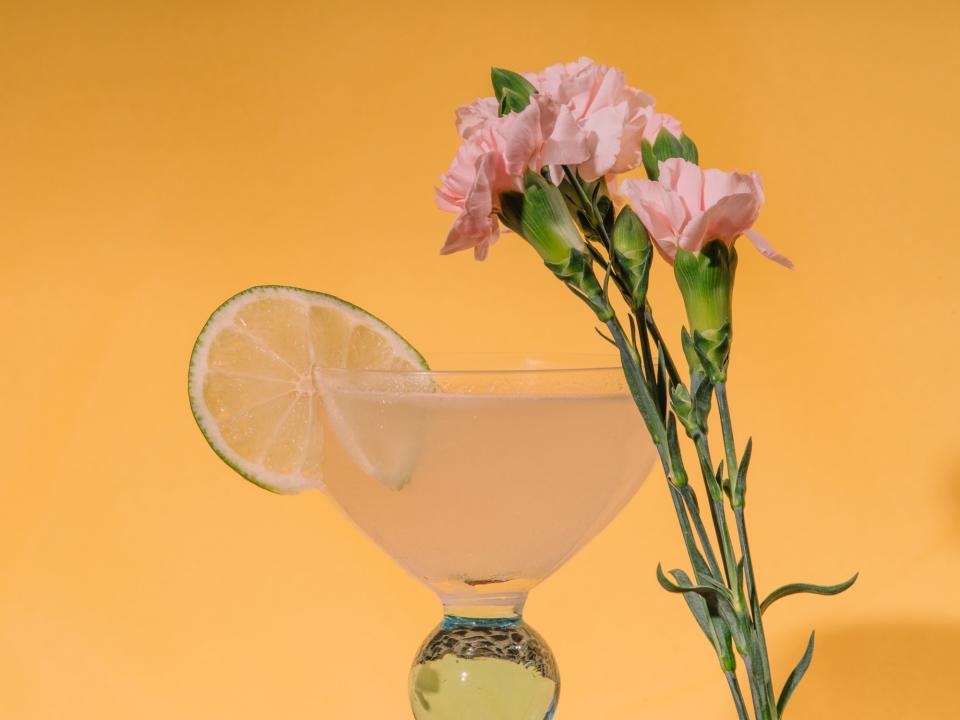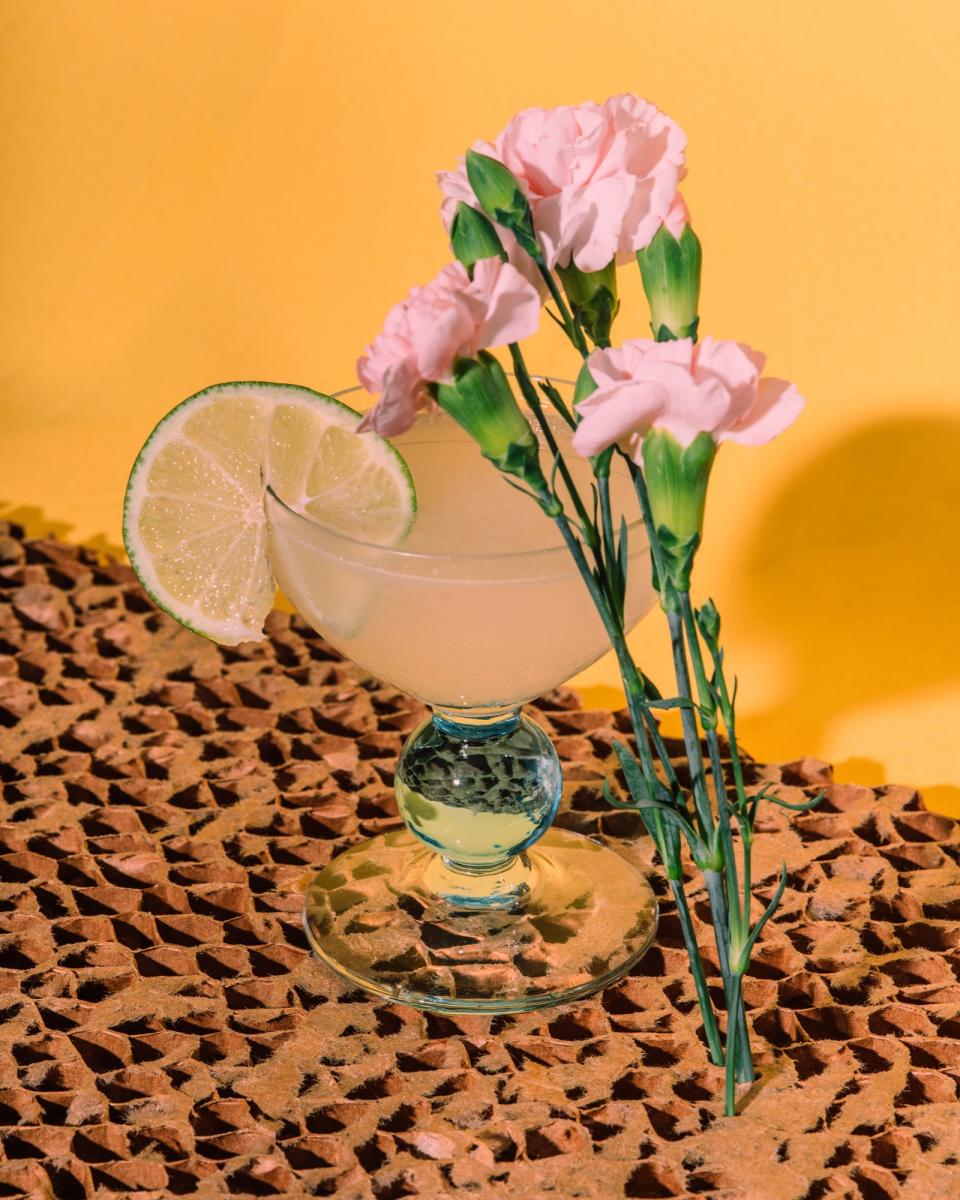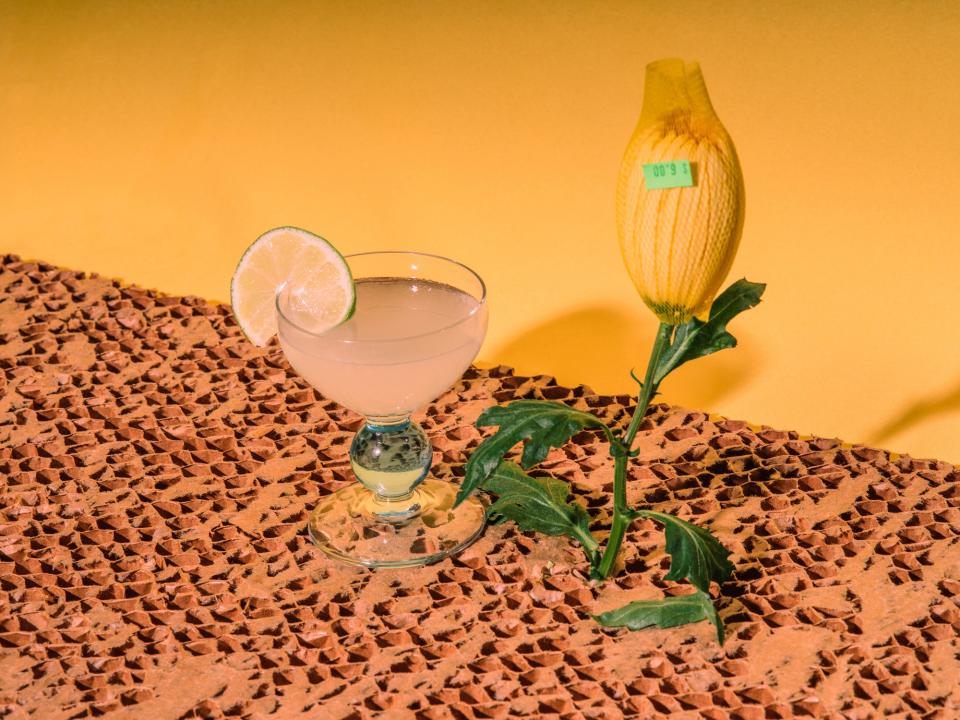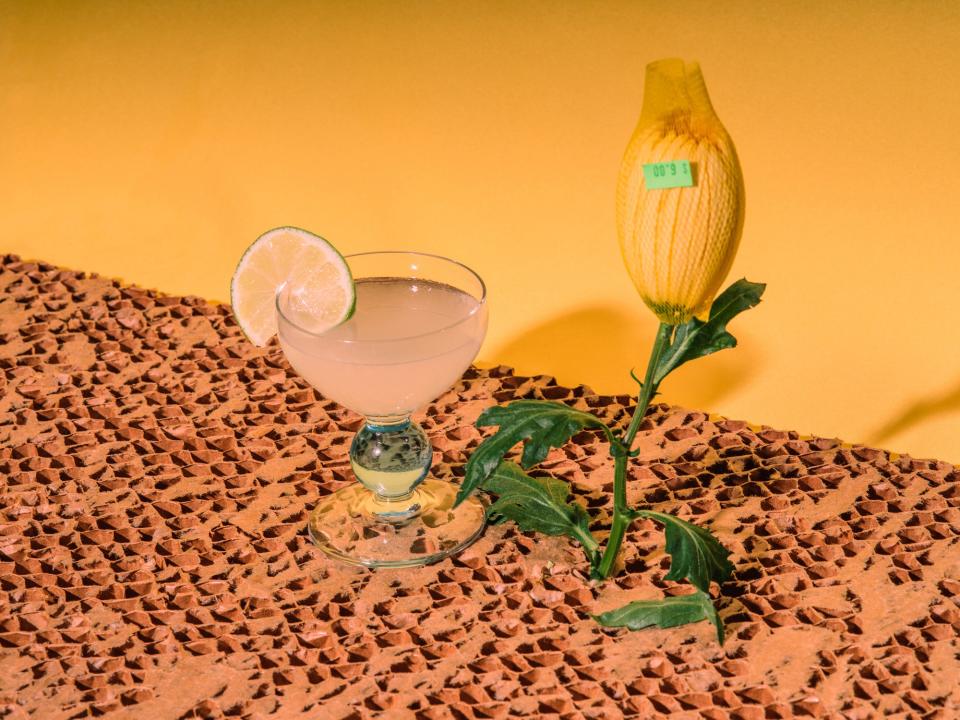It's Gin Season, Which Means You Should Make Some Gimlets
If summer is tequila season and winter is for whiskey, what’s spring? What pairs with that particular light green of budding leaves on trees? With immediately feeling frisky the second the sun comes out? With allergies going abosolutely batshit insane?
It’s gin season, baby.

Gin is perfect for spring: it’s floral but still a bit sharp, refreshing but with backbone. And despite the strength of its flavor, it's pretty versatile. And conveniently, it goes well with all those spring vegetables restaurants love to trot out this time of year: asparagus, artichokes, ramps—all the green stuff.
Gin is an infused liquor flavored predominently with juniper berries, which gives it a bit of a piney taste. From there, the flavor can vary widely producer to producer: infusions can include flowers, herbs, spices, you name it. There are some classic styles of gin—Old Tom, London Dry, Plymouth—but flavor profiles can get pretty wild, especially when you’re talking about the newer craft distillers who are less bound by tradition. If you're not usually into gin, start by trying one of those newer bottles—or you can just make yourself a gimlet.

A gimlet is a great reintroduction to gin, especially if you’ve only ever encountered the stuff in martinis and gin & tonics. The gimlet is limey and sweet and stuffed to the gills with gin—fans of daiquiris and margaritas will dig this one. Legend has it the gimlet was invented to prevent scurvy among sailors, so you can basically call it a wellness choice.
I asked Portland bartender and author Jeffrey Morgenthaler for some gimlet tips. Historically, the gimlet was made with Rose’s Lime, a concentrated lime juice that Morgenthaler notes is...a lot of corn syrup, which is "not really very good.” Instead, he prefers a version that uses fresh lime juice and simple syrup to replace the Rose’s.

“The challenge to making it with fresh juice is getting it as crisp as the classic version,” Morgenthaler notes. The solution? More gin: “I've found that using a little bit more gin actually helps with that, so it's really, really gin-forward.” Specifically, Tanqueray. But from there, he adds that it’s a pretty simple drink: “It couldn't really be much easier. I think that the only way you'll really screw it up is [if] you are too heavy-handed with the juice and sugar, and probably not heavy-handed enough with the gin.”
Got that? Not too sweet, amp up the gin, and stay away from the Rose’s. And, preferably, enjoy it somewhere outside, now that the sun’s out again.


